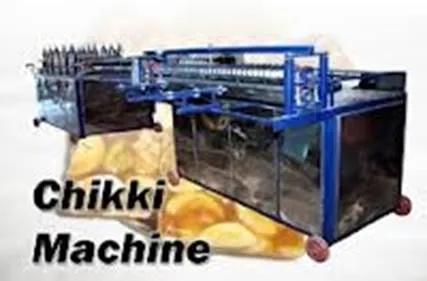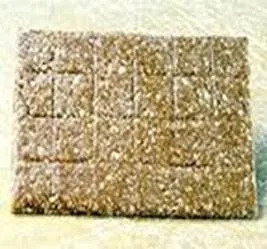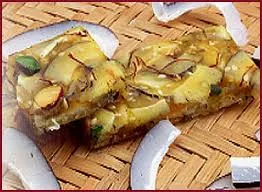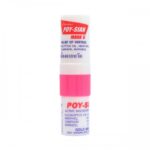

Start a Chikki Making Business
INTRODUCTION
Chikki is a sweet product prepared by mixing various types of nuts and other ingredients
either with jaggery or sugar. These ingredients are mixed with thick syrup made of jaggery
or sugar. The mixture is cooled and then smaller pieces are made and packed. There are
many ingredients which are used like groundnut or cashewnut kernels, sesame seeds, pieces
of dried coconut, dry-fruits and so on. Chikki is popular all over the country amongst all age
groups but school going children and rural areas are the main targets. This product can be
manufactured anywhere on the country, but this note considers the North-Eastern States as
a preferred location, in view of growing market
PRODUCTS
Chikkies can be made from many dry ingredients as explained above. It is a dry and sweet
preparation. It can be made by using costly ingredients like dry fruits but market for such
costly chikkies is limited and demand is only during winter season. But chikkies made from
groundnut kernels, dry coconut and sesame seeds have vast market round the year. This note
deals with such low cost high volume products
TYPES OF CHIKKI


Almond Cashew Nut Chikki Almond Chikki


Cashew Nut Chikki Cashew Nut Crushed Chikki


Cashew Nut –Dry Fruit – Chocolate Crushed


Coconut Chikki Rose Chikki
Availability of technology and compliances
DFRL, Mysore has successfully developed the technology. Compliance with the PFA Act is
compulsory.
MARKET POTENTIAL
Chikkies are not much popular in urban areas and are eaten in a very small quantity that
too during winter season. But they are very popular in semi-urban and rural areas especially
amongst school going children. Low priced chikkies packed individually in plastic sheets have
large market. Apart from sale through retailers located near the schools, bus stands, weekly
01markets, cinema halls, taxi stands, rural fairs etc. are the places where they are sold briskly.
Thus, the market is scattered.
Marketing Strategy:
Generally, the market is catered to by the local manufacturers and there are very few
dominant brands. Lonawala on Mumbai-Pune highway is famous for chikkies with more than
100 manufacturers. But on the whole, the market is controlled by the unorganised sector and
retailers play a critical role.
MANUFACTURING PROCESS
The process is very simple. Groundnut kernels are roasted to remove the outer red skin and
they are split in the splitting machine. In case of sesame seeds or dry coconut they are
roasted and small pieces of coconut are made manually. Simultaneously, jaggery is boiled in
water till thick syrup is formed and then filtered to remove unwanted particles. This hot
syrup is mixed with groundnut splits or roasted sesame seeds or pieces of roasted coconut
and then this mixture is poured in trays for drying. After about couple of hours, small square
sized pieces are cut and individual piece is packed in plastic wrappers. The Process Flow –
● Roasting of groundnuts, sesame seeds and pieces of coconuts
● Preparation of syrup of jaggery
● Mixing of ingredients in syrup of jaggery
● Cooling and cutting
● Packing
Land and Building
A plot of land of about 700 sq.mtrs. with built up area of 400 sq.mtrs. is adequate. The
production area would have two major sections. One would have furnaces (bhattis) and the
second one would accommodate trays for drying. A packing room of about 50 sq.mtrs. and
raw materials storage of 50 sq.mtrs. is sufficient. Finished goods godown can be
accommodated in 40-45 sq.mtrs. Price of land would vary according to location but it is taken
at Rs. 300/- per sq.mtr. whereas average construction cost is considered @ Rs.2, 500/- per
sq.mtr.
Machinery
Keeping in mind the size of the market, it is suggested to have rated capacity of 15 tonnes
per month or 180 tonnes per year with two shift working and 300 working days every year.
Increasing of capacity would not require huge capital investment or time and hence moderate
capacity is suggested. Following equipments shall be required.
Item Qty. Price (Rs)
Oil-fired Furnaces 4 60,000
Stainless Steel Utensils of Different Sizes 10 40,000
Large Capacity Pans 6 20,000
Platform-type Weighing Scale 1 15,000
Electronic Weighing Scale 1 7,000
Drying Trays 25 50,000
Other Miscellaneous Equipments — 10,000
Total 2,02,000
Miscellaneous Assets
A provision of Rs.50,000/- would be sufficient to take care of other assets like furniture and
fixtures, exhaust fans, electricals, storage facilities, etc.
Utilities
The all important requirement will be furnace oil. It is also possible to use either coal or
wood. Power requirement will be 7.5 HP whereas water requirement per day will be 800-1000
ltrs. Total expenditure on utilities at 100% capacity level will be Rs.2.00 lacs.
Raw Material
The major raw material will be groundnut kernels, sesame seeds, dry coconut and jaggery.
Groundnut chikki is very popular and hence 60% of the total production will be of groundnut
chikkies. Very small quantity of essences shall be required. As regards packing materials,
small sized wrappers, card-board boxes or plastic jars and second-hand corrugated cartons
will be required


